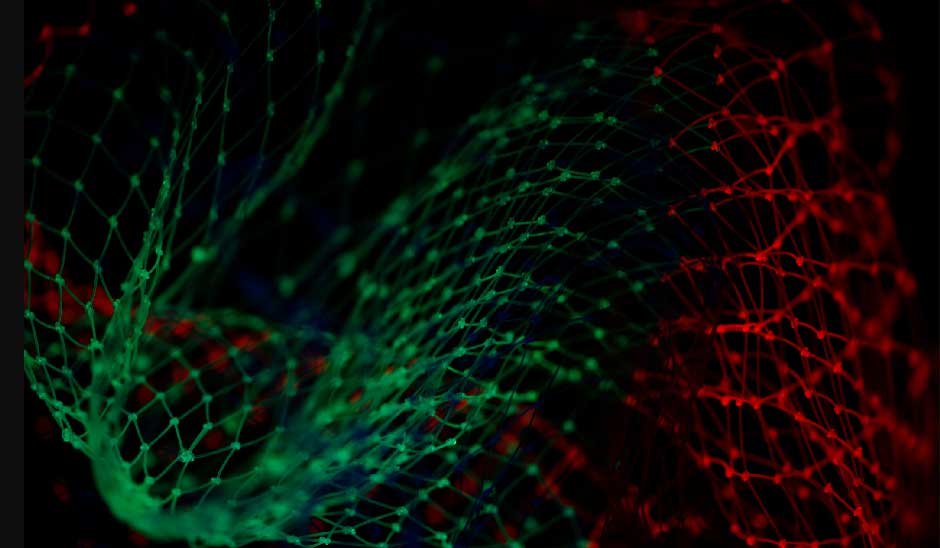Skip to the good bit
ToggleAs described by ScienceDirect: “Deep learning is a specialized form of machine learning that uses several processing layers to learn complex abstractions (concepts) in data by building a hierarchy/levels of abstractions, wherein each level of abstraction is created using the lower-level abstractions learnt by the preceding layer in the hierarchy.”
In simpler terms, deep learning involves training machines to process data in layers, gradually learning to recognize increasingly complex features. Imagine how a child learns to identify animals: first by noticing shapes, then by observing features like fur, tails, or color. Deep learning models work similarly, learning patterns and relationships within data, but with immense computational power and speed. These models, especially neural networks, have become the backbone of today’s most intelligent systems—fueling innovations in natural language processing, computer vision, robotics, and beyond.
Common Types of Deep Learning Models
Deep learning has evolved in the past decade to become more expansive. MongoDB lists several deep learning architectures (see below) that have been developed to handle different types of data and tasks. Each has unique strengths depending on the problem at hand. Some models are better suited for handling images, while others excel at processing sequential data like text or time series. Choosing the right architecture is crucial for achieving high performance, accuracy, and efficiency in an AI-driven application. As the field evolves, hybrid models combining the strengths of multiple architectures are also gaining popularity.
-
Feedforward Neural Networks (FNNs)
FNNs are the most basic type of neural network, where data moves in only one direction—from input to output—without any loops or cycles. These are useful for simple classification or regression problems. While not as complex as other models, FNNs form the foundation upon which more advanced deep learning architectures are built.
-
Convolutional Neural Networks (CNNs)
CNNs are widely used for image processing and computer vision. They use convolutional layers to automatically detect features like edges, textures, and shapes. This makes them ideal for tasks such as facial recognition, object detection, and medical image analysis.
-
Recurrent Neural Networks (RNNs)
RNNs are designed to handle sequential data. They have loops that allow information to persist, making them suitable for tasks like speech recognition, time-series analysis, and language modeling. Variants like LSTMs (Long Short-Term Memory networks) are especially good at remembering long-term dependencies in data.
-
Autoencoders
Autoencoders are unsupervised neural networks used for data compression and noise reduction. They learn to encode input data into a compact representation and then reconstruct it. This is useful for anomaly detection, image denoising, and feature extraction.
-
Self-Attention Networks (SANs)
SANs, including Transformers, have revolutionized natural language processing (NLP). These models pay attention to different parts of a sentence simultaneously, enabling them to understand context more effectively. They are the foundation of modern NLP systems like ChatGPT, BERT, and T5.
How ChatGPT Uses Deep Learning to Mimic Human Language
Applications like ChatGPT are built on transformer-based deep learning models, a class of self-attention networks. These models are trained on massive datasets containing books, articles, websites, and conversations. The training process involves adjusting billions of parameters in the model so it can predict the next word in a sequence based on context.
For example, if you type “The sky is,” ChatGPT has learned to predict that “blue” might be a logical next word based on millions of similar sentence patterns. Through layers of attention and abstraction, it learns not just grammar and syntax, but nuances, idioms, and even reasoning patterns—giving it the ability to generate coherent and contextually appropriate responses.
Real-World Applications of Deep Learning
Deep learning has left the lab and now plays a vital role in nearly every sector of society. Below are some of the major industries listed by IGI Global where it’s making a significant impact:
- Cybersecurity
- Medical Treatments
- Traffic Control
- Weather Forecasting
- Bioinformatics
- Fraud Detection
- Robotics
- Vocal AI
- Computer Vision
- Autonomous Vehicles
- E-Commerce
Let’s explore three of these areas in more detail:
-
Medical Treatments
Deep learning is transforming healthcare in profound ways. The Quantitative Imaging in Medicine and Surgery journal notes how convolutional neural networks (CNNs) are used to analyze medical images like X-rays, MRIs, and CT scans. These models can detect tumors, fractures, or anomalies with high accuracy—sometimes even outperforming human radiologists.
In addition, deep learning is being used to predict disease progression, tailor personalized treatment plans, and assist in drug discovery. For example, researchers use autoencoders and generative models to explore molecular structures and simulate how new drugs might interact with proteins.
-
Autonomous Vehicles
Autonomous or self-driving vehicles rely heavily on deep learning for real-time decision-making. These vehicles use a combination of sensors, cameras, radar, and LiDAR to gather information about their surroundings. Deep learning models then process this data to identify lanes, pedestrians, vehicles, and traffic signs.
CNNs help in object detection and scene recognition, while RNNs assist with sequence prediction for route planning. Reinforcement learning—a deep learning technique where models learn through trial and error—is also used to help cars make split-second decisions in complex environments, such as urban traffic.
-
Fraud Detection
In finance, detecting fraudulent transactions is critical. Deep learning models are increasingly deployed to recognize unusual patterns in transaction data. Unlike traditional rule-based systems, these models can adapt and learn from new types of fraud in real-time.
Recurrent neural networks and autoencoders are often used to detect anomalies in financial behavior. For example, if a user who typically shops in Sydney suddenly has a purchase made in Tokyo using their credit card, the system can flag it for review based on deviation from learned behavior patterns.
Conclusion
Deep learning is a revolutionary branch of machine learning that allows machines to make sense of complex and unstructured data through layered abstraction. By mimicking how the human brain processes information, deep learning powers some of today’s most impressive technologies—from virtual assistants and diagnostic tools to self-driving cars and fraud detectors.
With a growing variety of neural network architectures—FNNs, CNNs, RNNs, Autoencoders, and SANs—developers and researchers can tailor deep learning models to suit the specific needs of their applications. And as tools like ChatGPT demonstrate, the ability of these models to understand, generate, and respond to human language opens the door to a future filled with intelligent, adaptive, and life-enhancing technologies.
As deep learning continues to evolve, its impact will only deepen—changing how we work, communicate, and live.







